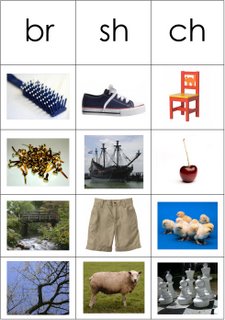What Are the Green Pink and Blue Sound
The Pink, Blue, and Green Series work is an integral part of Montessori language. Many people have questions about these materials, though. They don't seem quite as self-explanatory as other common Montessori work. There's a lot to know about the history and usage of these materials – so read on for more info!
When Maria Montessori began working with the children in the first Casa dei Bambini (Children's House), she gave them sandpaper letters to trace while saying the correct sound. She didn't do any specific work in the area of reading, but almost effortlessly, the children began to read. Italian is a very phonetic language (words are spelled the way they sound), and once the children knew the sounds, they could read.
After the Montessori method was brought to the United States in the 1920s, it was clear that another approach was needed to teach reading and writing in English. While there are many phonetically spelled words in English, there are even more that use "phonemes"; that is, groups of letters that create distinct sounds when combined. For instance, "ough" can make several sounds, as in "through" or "bough". These sounds need to be memorized; they can't be sounded out phonetically.
The Pink, Blue, and Green Series materials were developed to meet that need. They break down the essentials of English phonics into three groups: short vowel sounds, consonant blends, and phonetic combinations. By moving through these materials in order, a child is able to easily master the art of reading and writing in English.
The Pink Series materials are where it all begins. Pink Series words consist of three letters: a beginning and ending consonant, and a vowel in the middle. All of the vowel sounds in this series are short vowels: "a" as in "cat"; "e" as in "bed", "i" as in "pig", "o" as in "hot", and "u" as in "bus". The letter "y" is not included in this grouping.
 After mastering the Pink Series, the child is ready to move to Blue Series words. These words consist of consonant blends (at the beginning or end of the word, or both), and a short vowel sound. Examples would include "flag", "mend", and "clock". There are about 20 different blends, if you include doubles like "ll" and "ss". The child may work on this step for quite awhile, as there are hundreds of words that fit into this scheme (see picture for an example of Blue Series matching cards).
After mastering the Pink Series, the child is ready to move to Blue Series words. These words consist of consonant blends (at the beginning or end of the word, or both), and a short vowel sound. Examples would include "flag", "mend", and "clock". There are about 20 different blends, if you include doubles like "ll" and "ss". The child may work on this step for quite awhile, as there are hundreds of words that fit into this scheme (see picture for an example of Blue Series matching cards).
Once the Blue Series words have been mastered (essentially, that means the child is familiar with all the blends and can spell most Blue Series Words), they are ready for Green Series. The Green Series is where reading fluency really begins, as the child now has the keys to unlock the inconsistencies and idiosyncrasies of the English language.
The Green Series words consist of all the major phonemes, for example: "ai", "ou", "ie", and "ow". It also includes vowel combinations with a consonant in the middle, like "a_e" or "i_e" where the "_" is a consonant. These would be words like "cake" or "mice". It includes silent letters, hard and soft letters, and many other difficult spelling and reading challenges. There are about 40-50 different sound combinations in this group.
There is a huge variety of Pink, Blue, and Green Series work. Common ones include matching cards, rhyming cards, using the movable alphabet to spell words, cards with lists of words for spelling or reading practice, and word cards with matching objects. Materials differ by classroom and teacher and most Montessori companies have their own personalized sets of materials that are all slightly different.
Here are more posts about the Pink, Blue, and Green Series materials:
Word Lists for Pink, Blue, and Green Series Objects
What Can You Do With the Language Basics?
Setting Up Pink Series Work
My 5 Favorite Craft Store Finds – #1 in particular
Source: https://www.blog.montessoriforeveryone.com/montessori-basics-8-pink-blue-and-green-series.html
0 Response to "What Are the Green Pink and Blue Sound"
Post a Comment